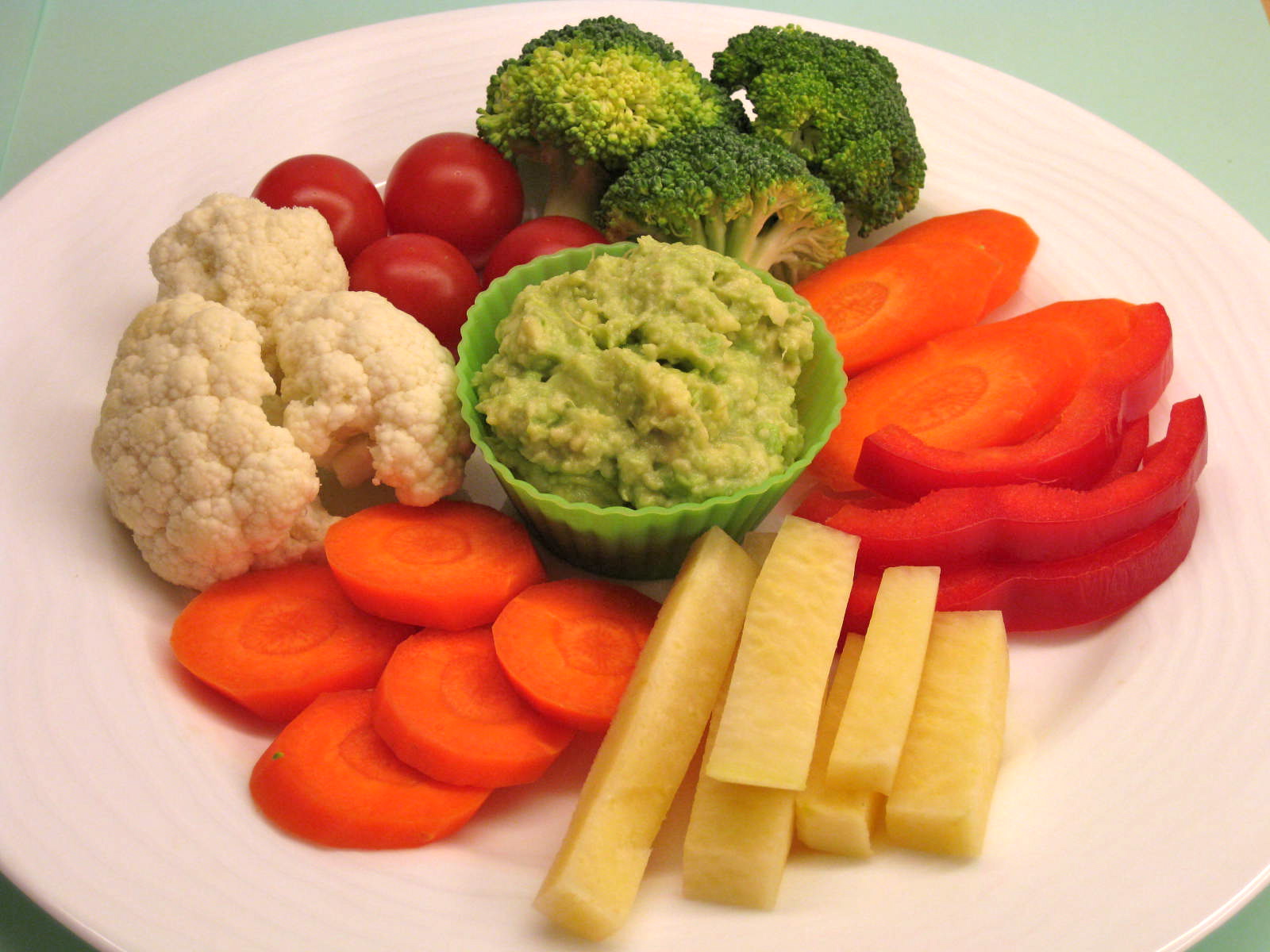When considering food poisoning, many individuals conjure images of undercooked meat, spoiled dairy, or contaminated seafood. However, few may consider the risk of consuming raw or poorly handled vegetables. This article aims to show whether you can get food poisoning from vegetables, the risks, possible contaminants, and preventative measures.

Can You Get Food Poisoning from Vegetables?
Vegetables can cause food poisoning, playing host to pathogens like E.coli, Salmonella, Listeria, Norovirus, and parasites. Contamination mainly occurs during growth, washing, or handling, with water, surfaces, or fertilizers as common culprits, leading to various health symptoms.
While they are crucial components of a balanced diet, vegetables can potentially carry harmful bacteria, viruses, parasites, and other pathogens that can cause foodborne illnesses. These pathogens can pass onto vegetables through various channels, including contaminated water, improper handling, and storage.
Pathogens Associated with Vegetables
- E. coli: This bacterium is commonly found in the intestinal tracts of animals. If vegetables are grown with contaminated water or fertilizers or come in contact with fecal matter, they can carry E. coli. Ingesting E. coli-contaminated vegetables can lead to severe stomach cramps, diarrhea, vomiting, and fever.
- Salmonella: Vegetables can become contaminated with salmonella if handled by someone with the bacteria on their hands or if they come into contact with contaminated water or surfaces. Salmonella infections can cause symptoms such as diarrhea, fever, and abdominal cramps.
- Listeria monocytogenes: This bacterium can thrive in cold environments, like your refrigerator. Listeria contamination can occur at any stage, from growth to storage. It can lead to listeriosis, a severe infection hazardous for pregnant women, older adults, and people with weakened immune systems.
- Norovirus: Often called the stomach flu, norovirus can be present in contaminated water or food and can easily be transferred to vegetables during processing and handling.
- Parasites: Vegetables can also harbor parasites like Giardia and Cryptosporidium, primarily when grown in contaminated water or improperly washed.
Historically, several instances of vegetable-associated foodborne illnesses have raised public health concerns. Notable cases include the E.coli outbreak linked to romaine lettuce in the United States in 2018 and the infamous German E.coli O104:H4 outbreak linked to sprouts in 2011. These incidents underscore the risk associated with consuming raw or improperly prepared vegetables.
Please read our article How Long Does Food Poisoning Last?
E. Coli in Vegetables and Food Poisoning
Escherichia coli, commonly known as E. coli, is a type of bacteria that lives in the intestines of humans and animals. While most strains are harmless, some can cause serious illness. Though often associated with contaminated meats and dairy products, vegetables can also become carriers of harmful E. coli. This article provides a comprehensive insight into E. coli contamination in vegetables, its health implications, and prevention measures.
Vegetables can become contaminated with E.coli through several channels. The bacteria can be present in the soil where the vegetables are grown or in the water used for irrigation. Contamination can also occur during harvesting, transportation, or packaging processes, often due to contact with fecal matter. Leafy greens such as lettuce and spinach are particularly susceptible, as the bacteria can easily adhere to their irregular surfaces.
E.coli in Organic Farming
Even organic farming is not exempt from E. coli risks. Though it avoids synthetic pesticides and fertilizers, organic farming often utilizes animal manure as a natural fertilizer. If this manure is contaminated with E. coli, it can easily be transferred to the vegetables.
Symptoms Caused by E.coli
Consuming vegetables tainted with E.coli can lead to food poisoning, known as E.coli infection. Symptoms typically appear within 3-4 days after exposure but can sometimes take up to 10 days. They include:
- Abdominal pain and cramps: One of the first signs of an E.coli infection is severe abdominal discomfort, including pain and cramping.
- Diarrhea: This is often bloody and severe. The E.coli bacteria damage the lining of the intestines, causing bloody stools.
- Vomiting and Nausea: People with E.coli infection often experience persistent vomiting.
- Fever: While less common, some people may experience a low-grade fever.
In severe cases, E.coli infection can lead to a life-threatening kidney failure called Hemolytic Uremic Syndrome (HUS). Symptoms of HUS include decreased frequency of urination, extreme fatigue, and loss of color in cheeks and inside the lower eyelids.
Salmonella in Vegetables and Food Poisoning
Vegetables can harbor salmonella due to a multitude of factors. The bacteria can make their way onto the produce from contaminated water or soil during growth or through contact with fecal matter during harvesting, storage, and transportation. Fresh produce with rough surfaces, such as melons or leafy greens, can be particularly vulnerable to salmonella contamination.
Despite its benefits, organic farming is not entirely immune to salmonella risks. Like E. coli, salmonella can be present in animal manure, which is commonly used as a natural fertilizer in organic farming. Hence, the use of contaminated manure can introduce salmonella to the vegetables.
Ingesting salmonella-contaminated vegetables can lead to salmonellosis, the symptoms of which generally appear 12 to 72 hours after infection. These symptoms can last for about 4-7 days and include:
- Diarrhea: Severe diarrhea is one of the most common symptoms of salmonellosis.
- Abdominal cramps: The infection can cause significant abdominal pain and discomfort.
- Fever: Infected individuals may experience a fever as the body fights off the bacteria.
- Nausea and vomiting: These symptoms occur as the body attempts to expel the harmful bacteria.
In some severe cases, the infection may spread from the intestines to the bloodstream and then to other body sites, leading to death unless promptly treated with antibiotics.
Listeria Monocytogenes in Vegetables and Food Poisoning
Listeria monocytogenes, a species of pathogenic bacteria, is a less well-known but highly potent cause of foodborne illnesses. Notoriously resilient, Listeria can survive and multiply in environments that most other pathogens cannot, such as refrigerated temperatures. Notably, vegetables can be carriers of this bacterium, leading to a severe infection known as listeriosis. This article explores Listeria contamination in vegetables, the symptoms it can cause, and measures for prevention.
Listeria monocytogenes can contaminate vegetables at any point in the supply chain, from growth to storage. The bacteria can be present in soil, sewage, and river water, which may be used for irrigation, making crops vulnerable. Additionally, contamination can occur during harvesting, transportation, or even in the refrigerator, a unique feature of this bacterium.
Despite its commitment to natural growth methods, organic farming is not immune to Listeria. Listeria can be introduced to the crops if contaminated animal manure is used as fertilizer. Also, given Listeria’s resilience, it can survive and thrive in excellent storage conditions often used for organic produce.
Consuming vegetables contaminated with Listeria can lead to listeriosis, a severe infection that affects primarily pregnant women, newborns, older adults, and individuals with weakened immune systems. Symptoms can appear a few days to a few weeks after consuming the contaminated food and include:
- Fever and muscle aches: These flu-like symptoms are usually the first to appear.
- Nausea and diarrhea: These gastrointestinal symptoms may occur, though they are less common.
- Headache, stiff neck, confusion, loss of balance, and convulsions are symptoms of invasive listeriosis, which occurs when the infection spreads to the nervous system.
In pregnant women, listeriosis can lead to premature delivery, miscarriage, stillbirth, or severe newborn infection.
Parasites in Vegetables and Food Poisoning
Parasitic infections associated with food consumption are often linked to undercooked meat or contaminated water. However, vegetables can also harbor parasites, notably Giardia and Cryptosporidium, leading to diseases ranging from mild discomfort to severe health issues. This article sheds light on these vegetable parasitic threats, their health implications, and steps to prevent their spread.
Vegetables can become a vehicle for transmitting parasites like Giardia and Cryptosporidium, primarily through contaminated water. These parasites are hardy cysts that can survive in various conditions and resist standard disinfection methods. They can contact vegetables through contaminated water for irrigation, washing, or processing. Moreover, contamination can also occur through contact with fecal matter during growth, harvesting, and handling.
Even organic farming practices, despite their numerous benefits, can unwittingly promote the transmission of these parasites. Contaminated animal manure used as fertilizer in organic farming can introduce Giardia and Cryptosporidium to the crops. Moreover, these parasites can survive in the soil for prolonged periods, increasing the chances of contamination.
Symptoms Caused by Giardia and Cryptosporidium
Consuming vegetables contaminated with Giardia or Cryptosporidium can lead to giardiasis and cryptosporidiosis, respectively. The onset of symptoms usually occurs within 1-2 weeks after ingestion and may last 2-4 weeks. They include:
- Diarrhea is typically the most common symptom associated with giardiasis and cryptosporidiosis.
- Stomach cramps and bloating: Affected individuals often experience abdominal discomfort.
- Nausea and vomiting occur as the body attempts to expel the parasites.
- Fever: This is more common in cryptosporidiosis.
- Weight loss and malnutrition: In long-lasting cases, the parasites can interfere with the body’s ability to absorb fats and other nutrients, leading to weight loss and malnutrition.
Preventing Vegetable-Related Food Poisoning
There are several steps you can take to minimize the risk of getting food poisoning from vegetables:
- Proper Washing: Rinse vegetables under running water before consumption. This helps remove any visible dirt and reduces the presence of potential pathogens.
- Peeling and Cooking: If possible, peeling vegetables can help eliminate bacteria present on the surface. Cooking vegetables can kill pathogens and significantly reduce the risk of food poisoning.
- Safe Storage: Store vegetables properly to avoid cross-contamination. This includes storing them separately from raw meats, seafood, and poultry in the refrigerator.
- Hygienic Handling: Always wash your hands before and after handling fresh produce to prevent the transfer of pathogens.
- Purchase From Reputable Sources: Buy vegetables from reputable sources where safe agricultural and handling practices are likely to be followed.
Conclusion
While the possibility of getting food poisoning from vegetables might be unsettling, it’s crucial to remember that the health benefits of consuming various vegetables as part of a balanced diet far outweigh the risks. Awareness of the potential dangers and consistent application of food safety practices can dramatically decrease the likelihood of foodborne illness. Stay informed, practice good hygiene, and enjoy the nutritional wealth of vegetables.
- How Many Tablespoons is One Clove of Garlic? - June 26, 2024
- How to Measure 3/4 Cup When You Don’t Have the Right Measuring Cup? - June 6, 2024
- How Much Does Cooked Pasta Weight Compare To Dry? - April 30, 2024
